The Torrens Building occupies a significant portion of the edge of Victoria Square, with an imposing Neoclassical façade facing the Square itself. The building sits upon an entire town acre to the northeast of the Square, with frontage also facing Wakefield Street. Originally built in 1881 for the purposes of public service offices, it was initially known simply as the New Government Offices. For many decades it went by a variety of names, such as New Public Offices or the Lands Title Office and Engineering Supply Department, after its primary initial occupants. In 1979, this confusion was put to rest when it was renamed as the Torrens Building, after Sir Robert Richard Torrens and his innovative and influential system of lands title registration. In 1993, after 112 years of continuous governmental occupation, the Torrens Building was closed for restoration. Since its reopening in 1997, it has become host to a number of Australian campuses of prestigious foreign universities.
Planning Controversy
The origins of the Torrens Building come from the fact that by the mid-1870s, office space for public servants in Adelaide was becoming scarce. The Treasury Building, also on Victoria Square, had become incapable of housing the required number of government workers to effectively run the colony. The South Australian Government announced a competition for the submission of tenders for a design for a new building on the corner of Victoria Square and Wakefield Street. The designs were to be within a budget of £50 000. First prize in this competition was to be £150, with two runners-up each receiving £75.
In 1877 the winner of this competition was revealed as Michael Egan, a Melbournian architect who was famous for his designs of public buildings in New South Wales. It was announced that of all submissions, only his and one other fell within the budget limit. As the second design, an anonymous submission signing himself ‘Fidelitas’, was found unworthy, no awards of £75 were offered.
This was an immediately controversial decision. Adelaide architects Edmund Wright and James MacGeorge published scathing letters to the editor in local newspapers, as well as complaining formally to the South Australian Government. The major criticism was that Egan’s design, a square design with a central courtyard, did not fulfil the requirement of allowing for simple expansion of the building in case of a need for more office space. MacGeorge’s grievance was held to be so legitimate that it was debated in Parliament; he had received permission from the late Commissioner of Public Works to submit plans for a design with the expansion already included. This meant that while this submission was not technically within the budget, simply removing the additional extension would resolve that concern. In the end, Egan’s design was still upheld as the winner. It has been suggested by architects Elfrida and Rolf Jensen that a potential reason for the reluctance of the Government to address the complaints of Wright and MacGeorge stems from the threat of legal action from Egan. Egan had been commissioned in 1877 to design an imposing ‘Norman-French-Gothic style’ building for the University of Adelaide, with almost 100 metres of frontage on North Terrace and a tower more than 50 metres tall, higher than that of the General Post Office or Town Hall. This building was never built, and the Jensens imply that the prize for the new Public Offices was granted as apologetic compensation for the failure of the Adelaide University project.
The scepticism towards Egan’s design turned out to be rather appropriate, at least from an economic point of view. The final cost for the construction of the design was £67,690, considerably more than the stated budgetary requirement.
Construction and Original Occupation
It was not only the architectural planning of the Torrens Building that was mired in controversy; the actual construction itself also involved considerable public concern. When it was announced that the new building would utilise stone imported from New South Wales, rather than local South Australian stone, protectionists were outraged. They petitioned the Parliament to step in and mandate that the only appropriate construction materials for a South Australian Public Office was South Australian stone, from the quarries in Tea Tree Gully. While this became a passionate issue for those in the quarrying industry, the Government asserted that Sydney stone was easier to work with, and thus would be pursued regardless. A newspaper article that later refers to this episode as ‘agitation got up some time ago by the labouring-classes here in connection with the importation of Sydney freestone’ reassures readers that at least protectionists were somewhat consoled by the use of 2.5 million South Australian-made bricks.
Construction work began on the site in 1879, and was fully completed by 1881. Its progress was followed by Adelaide newspapers, which were generally highly enthusiastic in their reporting. Certain elements of particular praise stand out. Reporters were impressed by the design of the strongroom, which contained sensitive records, referring to its ‘ingeniously arranged new apparatus all of the iron shutters which protect the windows [which can be] be closed and opened simultaneously by turning a winch in one corner of the room’. However, the most unique and fascinating element of the building, highly praised in its day, has been lost. In the centre of the courtyard initially stood a 50-foot tower. Called a campanile by one observer due to its resemblance to an Italian bell-tower, it was in fact a ventilation tower for the building’s toilet facilities. With the purpose of ensuring the ‘noxious emanations’ of such a facility were dispersed to the winds rather than creating a settled miasma within the courtyard, it was hailed as a breakthrough in public building design and suggested for widespread adoption. Unfortunately for the architectural heritage of Adelaide, this call was not heeded. Similarly unfortunately, the tower itself was demolished in 1967. The ‘Taj Mahal’, as employees affectionately called it, was demolished and replaced with a modern toilet block, one which lacked the wrought-iron ornamentation and architectural interest of the original structure.
Once the building was complete, it was initially occupied by the Minister of Public Works, the Public Works Department, the Registrar General, the Architect-in-Chief and his Department, the Engineer-in-Chief and Hydraulic Engineering Staff, and the Water Works Department. Of these, the most prominent were the Engineering and Water Supply Department, and thus the building came to be known commonly as the Engineering and Water Supply Building. This was yet another of the many names the building unofficially took before it became the Torrens Building.
Changing Occupants and Changing Name
The Engineering and Water Supply Department maintained its dominant presence in the building until 1967, when it was decided that the available office space was no longer sufficient for it to fulfil its duties. As such, the Department moved into a nearby modern office building. While the occupants of the building remained public servants, this shift signalled the beginning of a slow exodus of governmental staff from this building towards more modern accommodation.
Interestingly, it took twelve years from when the Engineering and Water Supply Department moved out to an official renaming of the building. In 1979, the building which had a multitude of names was finally granted a singular, universal designation: the Torrens Building. It was named after Sir Robert Richard Torrens, and his revolutionary Torrens Title System. This system of registration drastically simplified and streamlined the process of purchasing and selling property, through a centralised manner of determining property ownership. While this system was devised in the 1850s, well before the construction of the New Government Offices in the 1880s, the link can be seen in the fact that the Registrar-General soon moved into the building after its completion, and was based there for many decades.
Through the 1970s, due to the fact that its occupants were leaving for more expansive office spaces, there was a push for the building’s demolition. In its place would have been a multi-storey office block, updated to have modern facilities. Adelaide City Planners endorsed this idea, suggesting that that the needs for high-rise buildings in the heart of a growing city outweighed any heritage concerns.
In response, a counter-push was made to highlight the important value of the building. In 1978, it was successfully inscribed on the Register of the National Estate (now known as the National Heritage Database). In this inscription, the building was hailed as ‘the best remaining example in Adelaide of Italian Renaissance or Neo Classical style with a Palladian composition’. In 1981, it was also inscribed on the SA Heritage Register as a State Heritage Place. The SA Heritage Register outlines that the ‘building is also of architectural significance as the best remaining example of Renaissance Palladian style architecture in Adelaide, that quality reflecting the significant role of government agencies in the development of the State’. It claims that the Torrens Building is matched in importance as a Government office building only by the former Treasury and the Adelaide Railway Station.
Renovation, the University Precinct, and the Future
The exodus of governmental departments finally found its conclusion by 1993, when the Torrens Building was closed for extensive restoration. While it reopened in 1997, its run as a continuously-occupied government office was over. Various organisations utilised space in the building for a limited amount of time, but none became established until 2006. In that year, the prestigious Carnegie Mellon University launched its Heinz College. It was the first Australian campus of an American university. Adelaide was chosen for this honour due to the State Government’s desire to create an international university precinct around the hub of Victoria Square. This endeavour has been mostly successful, at least in the sense of finding occupants for the Torrens Building. In 2007, Carnegie Mellon was followed by the British Cranfield University, which was launched with fanfare by the Duke of Kent. Unfortunately for Adelaide’s reputation as a university city, it controversially closed its campus and withdrew from the Torrens Building in 2010. Since 2009 the building has been home to a campus of the University College London with its School of Energy and Resources. It has, however, announced plans to withdraw from Adelaide and close its campus by 2018. More promising for the future of the university precinct are the prospects of Torrens University, which was opened in 2014 with a speech by former US President Bill Clinton.
The future for the building itself, however, is in some level of doubt. Since 2015, the State Government has been attempting to sell the State Administration Centre, including the Torrens Building, to raise funds. This has been a controversial practice; multiple attempts at sale, including one potential deal worth $400 million, have fallen through. As of April 2017, no progress on this front has been made.
Public Fascination with Treasury Tunnels
One of the most enduring and beguiling myths about the centre of the City of Adelaide relates to the presence of secret underground tunnels linking government buildings with each other. The building most prominently associated with this fascination is the former Treasury building, which is now a hotel. While the Treasury did have some short tunnels linking different wings of the building, in reality the majority of space beneath the building is instead devoted to basements.
In the case of the Torrens Building, the idea that has captured the minds of the public is an underground tunnel directly linking it to the Treasury. This would have allowed public servants to venture between the two offices without having to show themselves publicly. While this is an alluring vision of secret government activity, no evidence has conclusively emerged to demonstrate the validity of these claims. The original plans for the Torrens Building were open to public scrutiny, as the tender for designs was an open competition. Egan’s documents give no indication of any tunnels, though do include traditional basements. Furthermore, no photographic evidence of these tunnels has been shown to exist. While the possibility does remain that these tunnels are merely collapsed or hidden after many decades of disuse, it seems unlikely that convincing evidence will appear to confirm their existence beyond doubt anytime soon.


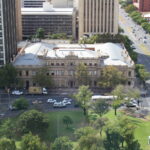

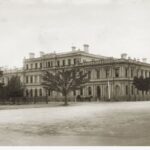
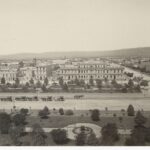
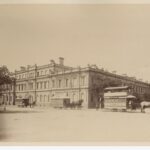
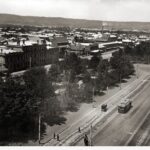
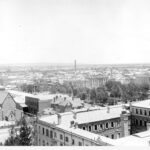
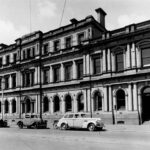
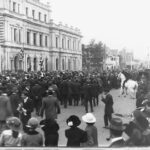

Comments